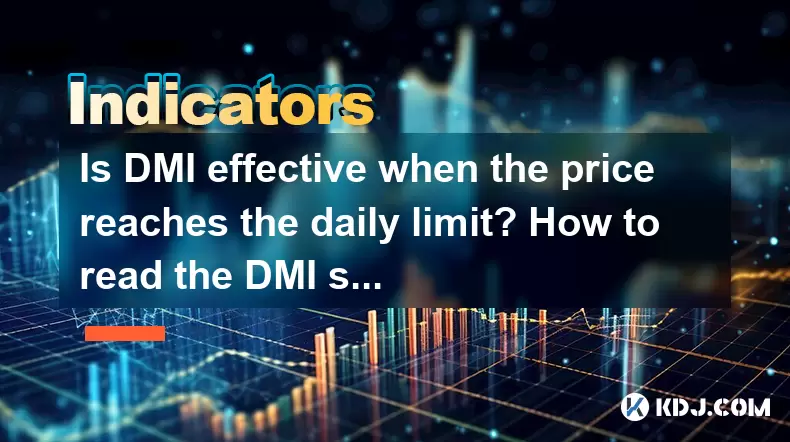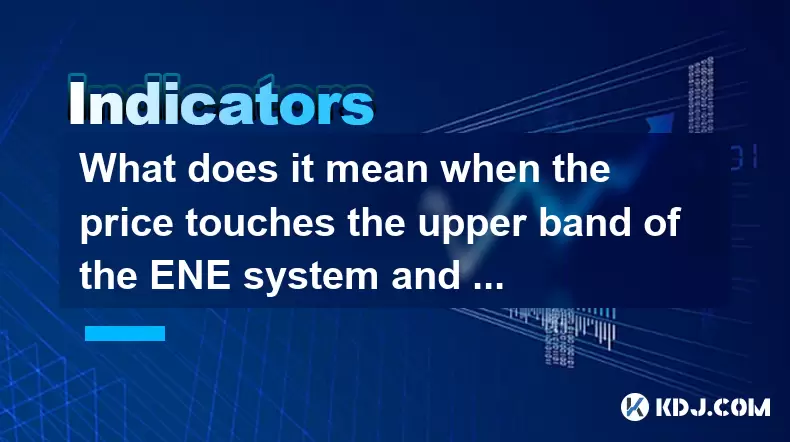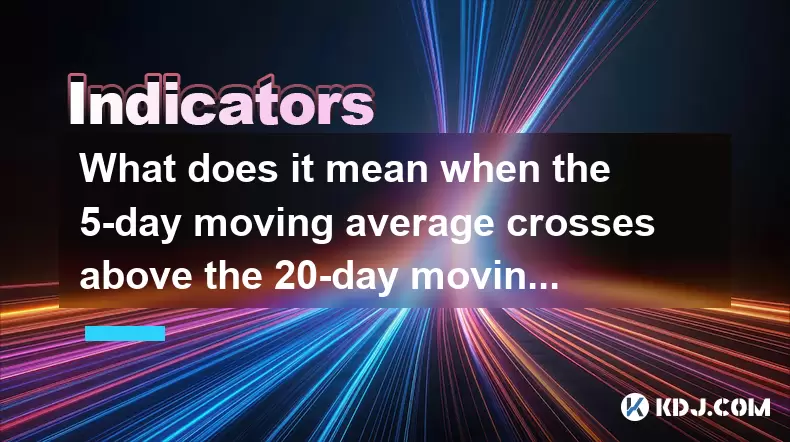-
 Bitcoin
Bitcoin $116700
0.48% -
 Ethereum
Ethereum $4213
6.27% -
 XRP
XRP $3.280
1.22% -
 Tether USDt
Tether USDt $1.000
0.02% -
 BNB
BNB $805.1
2.46% -
 Solana
Solana $180.2
2.65% -
 USDC
USDC $0.0000
0.02% -
 Dogecoin
Dogecoin $0.2412
8.50% -
 TRON
TRON $0.3356
-1.11% -
 Cardano
Cardano $0.8108
3.59% -
 Hyperliquid
Hyperliquid $43.89
8.53% -
 Chainlink
Chainlink $21.15
10.75% -
 Stellar
Stellar $0.4502
1.41% -
 Sui
Sui $3.935
4.69% -
 Bitcoin Cash
Bitcoin Cash $570.7
-1.75% -
 Hedera
Hedera $0.2636
3.28% -
 Avalanche
Avalanche $24.25
4.48% -
 Ethena USDe
Ethena USDe $1.001
0.03% -
 Litecoin
Litecoin $122.0
-0.08% -
 Toncoin
Toncoin $3.445
2.68% -
 UNUS SED LEO
UNUS SED LEO $8.979
-0.08% -
 Shiba Inu
Shiba Inu $0.00001379
6.73% -
 Uniswap
Uniswap $10.91
2.00% -
 Polkadot
Polkadot $4.106
5.39% -
 Dai
Dai $1.000
0.02% -
 Pepe
Pepe $0.00001227
9.07% -
 Bitget Token
Bitget Token $4.507
0.72% -
 Cronos
Cronos $0.1576
3.40% -
 Monero
Monero $272.0
-1.68% -
 Ethena
Ethena $0.7502
21.27%
Is DMI effective when the price reaches the daily limit? How to read the DMI signal when the price falls back after breaking the limit?
DMI helps traders assess trend strength in crypto markets; +DI rises with buying pressure, -DI with selling, and ADX gauges trend strength over time.
Jun 03, 2025 at 03:15 am

The Directional Movement Index (DMI) is a popular technical analysis indicator used by traders to assess the strength and direction of a price trend. When it comes to cryptocurrency trading, understanding how DMI behaves in different market conditions, such as when prices reach the daily limit and then fall back, is crucial for making informed trading decisions. In this article, we will explore whether DMI is effective when the price reaches the daily limit and how to read DMI signals when the price falls back after breaking the limit.
Understanding DMI and Its Components
The DMI consists of three lines: the Positive Directional Indicator (+DI), the Negative Directional Indicator (-DI), and the Average Directional Index (ADX). The +DI measures the upward movement in price, the -DI measures the downward movement, and the ADX quantifies the strength of the trend, regardless of its direction.
- +DI (Positive Directional Indicator): This line rises when the current high minus the previous high is greater than the previous low minus the current low. It indicates the presence of buying pressure.
- -DI (Negative Directional Indicator): This line rises when the previous low minus the current low is greater than the current high minus the previous high. It indicates the presence of selling pressure.
- ADX (Average Directional Index): This line measures the strength of the trend. A rising ADX indicates a strengthening trend, while a falling ADX suggests a weakening trend.
DMI Effectiveness When Prices Reach the Daily Limit
When prices in the cryptocurrency market reach the daily limit, it often indicates significant buying or selling pressure. The effectiveness of DMI in such scenarios depends on how these movements are reflected in the +DI, -DI, and ADX lines.
When a cryptocurrency's price hits the daily limit, the +DI will typically rise if the limit is reached due to buying pressure, and the -DI will rise if the limit is reached due to selling pressure. However, the ADX may not always show a significant increase immediately, as it measures the strength of the trend over time.
In practice, when the price hits the daily limit due to buying pressure, traders should look for a rising +DI and a falling or stable -DI. This combination suggests that the bullish trend is strong. Conversely, if the price hits the daily limit due to selling pressure, a rising -DI and a falling or stable +DI would indicate a strong bearish trend.
Reading DMI Signals When Prices Fall Back After Breaking the Limit
After a cryptocurrency's price reaches the daily limit and then falls back, interpreting DMI signals becomes more nuanced. The key is to observe how the +DI, -DI, and ADX lines react to the price movement.
When the price falls back after breaking the upper limit, traders should monitor the +DI and -DI lines for crossovers. A crossover occurs when the +DI line crosses above the -DI line, suggesting a potential continuation of the bullish trend, or when the -DI line crosses above the +DI line, indicating a potential bearish reversal.
- If the +DI remains above the -DI after the price falls back: This suggests that the bullish trend is still intact, and the pullback may be a temporary correction.
- If the -DI crosses above the +DI: This indicates that the bearish pressure is increasing, and the price may continue to fall.
Additionally, the ADX line should be monitored to gauge the strength of the trend. If the ADX continues to rise after the price falls back, it suggests that the trend, whether bullish or bearish, is strengthening. If the ADX falls, it indicates that the trend is weakening, and the market may enter a consolidation phase.
Practical Example of DMI Analysis
To illustrate how to use DMI in a real trading scenario, let's consider a hypothetical example of a cryptocurrency reaching the daily limit and then falling back.
Suppose the price of a cryptocurrency, let's call it CryptoX, reaches its daily upper limit of $100 due to strong buying pressure. At this point, the +DI line is rising sharply, and the -DI line is falling or stable. The ADX line is also rising, indicating a strengthening bullish trend.
After reaching the daily limit, the price of CryptoX falls back to $95. Here, traders should closely watch the +DI and -DI lines for any crossovers. If the +DI remains above the -DI, it suggests that the bullish trend is still in place, and the pullback might be a buying opportunity. However, if the -DI crosses above the +DI, it indicates increasing bearish pressure, and traders should consider exiting their positions or taking short positions.
Additionally, the ADX line should be monitored. If the ADX continues to rise after the price falls back, it confirms the strength of the trend. If the ADX falls, it suggests that the trend is weakening, and traders should be cautious about entering new positions.
Using DMI with Other Indicators
While DMI is a powerful tool for assessing trend strength and direction, it is often more effective when used in conjunction with other technical indicators. Combining DMI with indicators like the Moving Average Convergence Divergence (MACD), Relative Strength Index (RSI), or Bollinger Bands can provide a more comprehensive view of market conditions.
- MACD: This indicator can help confirm trend direction and momentum. If the MACD line crosses above the signal line while the +DI is above the -DI, it reinforces a bullish signal. Conversely, if the MACD line crosses below the signal line while the -DI is above the +DI, it reinforces a bearish signal.
- RSI: The RSI can help identify overbought or oversold conditions. If the RSI is above 70 and the +DI is above the -DI, it may indicate that the bullish trend is overbought and due for a correction. If the RSI is below 30 and the -DI is above the +DI, it may indicate that the bearish trend is oversold and due for a rebound.
- Bollinger Bands: These bands can help identify volatility and potential reversal points. If the price breaks above the upper Bollinger Band and the +DI is above the -DI, it suggests a strong bullish trend. If the price breaks below the lower Bollinger Band and the -DI is above the +DI, it suggests a strong bearish trend.
Implementing DMI in Trading Strategies
To effectively use DMI in trading strategies, traders need to follow a systematic approach. Here are some steps to consider when incorporating DMI into your trading plan:
- Identify the Trend: Use the +DI and -DI lines to determine the current trend. If the +DI is above the -DI, the trend is bullish. If the -DI is above the +DI, the trend is bearish.
- Assess Trend Strength: Monitor the ADX line to gauge the strength of the trend. A rising ADX indicates a strengthening trend, while a falling ADX suggests a weakening trend.
- Watch for Crossovers: Pay close attention to crossovers between the +DI and -DI lines. A bullish crossover (when the +DI crosses above the -DI) can signal a potential buying opportunity, while a bearish crossover (when the -DI crosses above the +DI) can signal a potential selling opportunity.
- Confirm with Other Indicators: Use other technical indicators like MACD, RSI, and Bollinger Bands to confirm DMI signals and gain a more comprehensive view of market conditions.
- Set Entry and Exit Points: Based on the DMI signals and other indicators, set clear entry and exit points for your trades. Consider using stop-loss orders to manage risk.
Frequently Asked Questions
Q1: Can DMI be used effectively in highly volatile cryptocurrency markets?
A1: Yes, DMI can be effective in volatile markets as it helps traders identify the strength and direction of trends. However, it should be used in conjunction with other indicators to account for the increased volatility and potential for false signals.
Q2: How often should I check DMI signals in a fast-moving market?
A2: In fast-moving markets, it is advisable to check DMI signals at least every few hours to stay updated on trend changes and potential trading opportunities. However, the frequency can be adjusted based on the specific cryptocurrency and market conditions.
Q3: Is it possible to use DMI for long-term trading strategies in cryptocurrencies?
A3: Yes, DMI can be used for long-term trading strategies by adjusting the time frame of the charts. For long-term analysis, traders can use daily or weekly charts to assess trends and make informed decisions based on DMI signals.
Q4: How can I avoid false signals when using DMI in cryptocurrency trading?
A4: To avoid false signals, traders should use DMI in combination with other technical indicators and consider the overall market context. Additionally, waiting for confirmation from multiple sources before acting on a DMI signal can help reduce the likelihood of false positives.
Disclaimer:info@kdj.com
The information provided is not trading advice. kdj.com does not assume any responsibility for any investments made based on the information provided in this article. Cryptocurrencies are highly volatile and it is highly recommended that you invest with caution after thorough research!
If you believe that the content used on this website infringes your copyright, please contact us immediately (info@kdj.com) and we will delete it promptly.
- Trump, Crypto Vehicle, and WLFI Tokens: A New York Minute on the Latest Buzz
- 2025-08-10 00:30:12
- Wheat Penny Fortune: Unearthing Valuable Coins in Your Pocket Change
- 2025-08-10 00:35:19
- AI Coin Mania: Dubai Millionaires Eye 20x Gains!
- 2025-08-09 23:10:12
- ChatGPT's Hot Takes: Meme Coins to Buy Now for a Wild 2025!
- 2025-08-09 23:10:12
- Jurassic Park Vibes in Your Pocket: The Colourful Canadian Coin Featuring a Dinosaur Eye
- 2025-08-09 23:50:12
- Altcoins on the Radar: VeChain, Ethereum, and the Shifting Crypto Landscape
- 2025-08-09 23:50:12
Related knowledge

What does it mean when the price is trading above the SAR indicator but the red dots are densely packed?
Aug 09,2025 at 11:49pm
Understanding the SAR Indicator and Its Visual SignalsThe SAR (Parabolic Stop and Reverse) indicator is a technical analysis tool used primarily to de...

What does it mean when the MACD histogram continues to shorten but the price reaches a new high?
Aug 09,2025 at 09:29pm
Understanding the MACD Histogram and Its ComponentsThe MACD (Moving Average Convergence Divergence) indicator is a widely used technical analysis tool...

What does it mean when the Triple Moving Average (TRIX) turns downward but the price doesn't fall?
Aug 09,2025 at 12:42pm
Understanding the Triple Moving Average (TRIX) IndicatorThe Triple Moving Average, commonly known as TRIX, is a momentum oscillator designed to filter...

What does it mean when the price touches the upper band of the ENE system and then falls back?
Aug 10,2025 at 12:42am
Understanding the ENE Indicator StructureThe ENE (Envelope) indicator is a technical analysis tool used in cryptocurrency trading to identify potentia...

What does it mean when the Williams' oscillator repeatedly hits bottoms but fails to rebound?
Aug 09,2025 at 09:28am
Understanding the Williams %R OscillatorThe Williams %R oscillator, developed by Larry Williams, is a momentum indicator used in technical analysis to...

What does it mean when the 5-day moving average crosses above the 20-day moving average in a moving average system?
Aug 10,2025 at 12:49am
Understanding Moving Averages in Cryptocurrency TradingIn cryptocurrency trading, moving averages are among the most widely used technical indicators....

What does it mean when the price is trading above the SAR indicator but the red dots are densely packed?
Aug 09,2025 at 11:49pm
Understanding the SAR Indicator and Its Visual SignalsThe SAR (Parabolic Stop and Reverse) indicator is a technical analysis tool used primarily to de...

What does it mean when the MACD histogram continues to shorten but the price reaches a new high?
Aug 09,2025 at 09:29pm
Understanding the MACD Histogram and Its ComponentsThe MACD (Moving Average Convergence Divergence) indicator is a widely used technical analysis tool...

What does it mean when the Triple Moving Average (TRIX) turns downward but the price doesn't fall?
Aug 09,2025 at 12:42pm
Understanding the Triple Moving Average (TRIX) IndicatorThe Triple Moving Average, commonly known as TRIX, is a momentum oscillator designed to filter...

What does it mean when the price touches the upper band of the ENE system and then falls back?
Aug 10,2025 at 12:42am
Understanding the ENE Indicator StructureThe ENE (Envelope) indicator is a technical analysis tool used in cryptocurrency trading to identify potentia...

What does it mean when the Williams' oscillator repeatedly hits bottoms but fails to rebound?
Aug 09,2025 at 09:28am
Understanding the Williams %R OscillatorThe Williams %R oscillator, developed by Larry Williams, is a momentum indicator used in technical analysis to...

What does it mean when the 5-day moving average crosses above the 20-day moving average in a moving average system?
Aug 10,2025 at 12:49am
Understanding Moving Averages in Cryptocurrency TradingIn cryptocurrency trading, moving averages are among the most widely used technical indicators....
See all articles

























































































